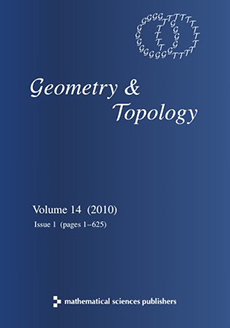Abstract
We address the question: how common is it for a 3–manifold to fiber over the circle? One motivation for considering this is to give insight into the fairly inscrutable Virtual Fibration Conjecture. For the special class of 3–manifolds with tunnel number one, we provide compelling theoretical and experimental evidence that fibering is a very rare property. Indeed, in various precise senses it happens with probability 0. Our main theorem is that this is true for a measured lamination model of random tunnel number one 3–manifolds.
The first ingredient is an algorithm of K Brown which can decide if a given tunnel number one 3–manifold fibers over the circle. Following the lead of Agol, Hass and W Thurston, we implement Brown’s algorithm very efficiently by working in the context of train tracks/interval exchanges. To analyze the resulting algorithm, we generalize work of Kerckhoff to understand the dynamics of splitting sequences of complete genus 2 interval exchanges. Combining all of this with a “magic splitting sequence” and work of Mirzakhani proves the main theorem.
The 3–manifold situation contrasts markedly with random 2–generator 1–relator groups; in particular, we show that such groups “fiber” with probability strictly between 0 and 1.
Citation
Nathan M Dunfield. Dylan P Thurston. "A random tunnel number one 3–manifold does not fiber over the circle." Geom. Topol. 10 (4) 2431 - 2499, 2006. https://doi.org/10.2140/gt.2006.10.2431
Information





